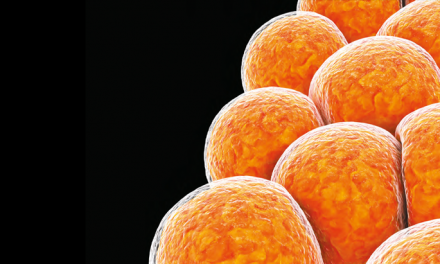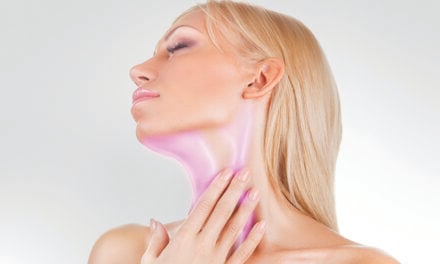Pierre Jacques Ackermann talks through his novel new concept of rejuvenating the midface by injecting the masseter muscles, creating a slimmer lower third of the face and accentuating volume in the cheeks
Currently, there are many publications and studies that comment on treatments and techniques used to improve the lower face contour. It’s about refining the lower face by decreasing the volume of masseteric muscles using botulinum toxin A (BTA), which is a useful and minimally invasive modality for masseteric treatment.
In 1994, Moore and Wood introduced BTA injection to the hypertrophic masseter to treat functional problems1. Other than Bruxism, the author notes three additional significant aesthetic indications to treat the lower face in this way:
- The feminisation of a female face with a square or triangular shape due to masseter hypertrophy
- To ‘Westernise’ an Asian patient’s face; several modalities were previously used for such a treatment, including surgical excision of the masseter muscle, radiofrequency, ablation of the nerve to the masseter muscle before injection of botulinum toxin, and even bone resection
- The feminisation of a man who is in the process of transformation as a transgender.
Finally, a growing number of non-Asian patients similarly find this slimmer lower face more aesthetically pleasing and seek to attain such a face shape.
The author uses BTA to reduce the profile of the masseter muscles to ‘beautify’ the face (Figure 1), in a concept they have termed ‘Aesthetic Masseters’.
Aesthetic practitioners all know the importance of restoring the midface by treating the cheekbones and tear troughs; it is a very frequent request when patients feel sad, tired or look older than their age.
The ageing of this area corresponds to the evolution of four anatomical elements:
- The skin and its sagging by loss of elasticity
- The muscles fight against gravity and become weaker and less toned
- Deep and superficial fats, especially malar and jugal, descend on a vertical axis
- The bone structure degenerates over time.
Age-related structural changes are predominantly in the periorbital and mid-cheek zones, including the superomedial and inferolateral aspects of the orbit, the medial suborbital and piriform areas of the maxilla, and the pre-jowl area of the mandible (Figure 2).
This class of ageing is known as the skeletonisation of the face; which includes the sagging of the lower third and the formation of an irregular jawline, often affecting those aged fifty years and older. In most cases, the practitioner can inject a cannula or needle with dermal fillers such as hyaluronic acid (HA), collagen biostimulator, or fat injection as a lipofiller. For severe congenital cheekbone atrophy, the patient can receive malar prosthesis.
So, what to do when a patient asks for an improved look but their midface has no loss of volume (Figure 3)?
The author’s response will not be to restore this mid area but to highlight it. This can be achieved when the patient has good cheek bone volume but the midface features are drowned in a kind of ‘facial block’, more rectangular than square or triangular. Now is the time for facial harmonisation rather than rejuvenation.
A ‘facial block’ is how the author defines a face that does not require injection but there is a need to highlight the midface by treating only the underlying area, i.e. the mandibular.
This paper comprises two original factors:
- Specifically, it defines a new approach ‘beautifying the midface without injecting it’.
- It is the first study that shows masseters reduce in size, proved by Magnetic Resonance Imaging (MRI) before and 2 months after injection.
The treatment concept of Aesthetic Masseters is not only valid for masseter hypertrophy but also for patients with a rectangular or square face and there is inadequate cheekbone projection.
In order to offer such a treatment, the practitioner has to undertake a detailed analysis of the face, considering both parts of the face (mid and lower), instead of analysing them separately. It also requires that the practitioner now treats cheekbones and tear trough first, and naso-genians folds second.
In this study, the author only chose to treat women because beauty ideals for men go against volumised cheekbones; and it’s the same for masseteric hypertrophy, practitioners have to maintain a square lower face for men to achieve a manlier appearance.
Moreover, the author also insisted that the patients must be young and should not have a ‘saggy’ lower face because the treatment will reduce the masseters and could (but not always) aggravate the irregular jaw line. Indeed, very recently, in 2017, Park could prove that injection of BTA in masseters does not affect the subcutaneous thickness from the skin surface to the masseter muscle; it only changes the muscle thickness2.
The author also excluded women who have very thin cheeks with a rectangular face and well-drawn cheekbones like those of Angelina Jolie; the result of such a reducing treatment of the lower third could intensify the thin appearance of the face.
Definition
The cheekbone is the most prominent part of the cheek under the outer corner of the eye and centred on the malar bone; it must be neither too high nor too low.
Anatomy
It is predominantly centred on the malar bone, shaped like a quadrilateral; two sides and four edges are described.

The upper border, concave, is called the orbital border because it contributes to the formation of the external orifice of the orbit. Detached from the upper half of this line is the frontal process, lamella sagittally backwards to articulate upwards with the frontal bone, backwards with the sphenoid bone. The zygomatic nerve channel crosses this process. The posterior or temporal border is circumvented in an elongated ‘S’.
The antero-inferior border forms the anterior limit of the articular surface with the maxilla.
The upper angle is articulated with the zygomatic process of the frontal bone; the anterior angle is articulated with the maxilla. Between this and the frontal process of the zygomatic bone is a small part of the bone that responds to the anterior end of the inferior orbital fissure.
Finally, the posterior angle, bevelled looking backwards and upwards, articulates with the apex of the zygomatic process of the temporal.
Conceptualisation
As described earlier, the cheekbone is the most prominent part of the cheek under the outer corner of the eye and centred on the malar bone; it must be neither too high nor too low.
It takes the shape of the malar bone and has a very harmonious curve that is located between the medio-jugal area in the front and the zygomatic arch behind it.
On a vertical axis, the cheekbone is under the dark eye circle and above an imaginary line that draws from the lateral part of the nose to the ear. On the anterior face, we can find deep and superficial fats.
The cheekbone has to be projected in two directions of space: forward and sideways.
Except for the fashionable profiloplasty, volumising the cheekbone is often enough for rebalancing the whole face.
Botulinum toxin: mechanisms of action
Botulinum toxin allows the splitting of the proteins responsible for presynaptic fusion. This cleavage inhibits the release of acetylcholine towards the motive plate at the neuromuscular junction, thereby causing dysfunction of the nerve terminal. A blockage of the muscular activity is thus obtained.
In order for a muscle fibre to no longer contract, the inhibition of acetylcholine release must be sufficient so that the motive plate potentials are below the threshold for initiation of the muscle action potential. The degree of myorelaxation of the muscle is, therefore, determined by the number of paralysed and non-paralyzed fibres.
However, there is no degeneration of the synaptic endings of the motor neuron, nor degeneration of the neuromuscular junction, but only their dysfunction.
When manipulation blocks neurotransmission for an extended period of time (not specific to botulinum toxin), we observe the budding of new nerve endings from the poisoned motor plate, under the influence of growth factors secreted by the paralysed muscle: this is known as ‘sprouting’.
These new nerve endings establish synapses one to two weeks after botulinum toxin injection. The maximum number is reached between five to ten weeks. As soon as these synaptic buttons release enough transmitters to induce a contractile response, the paralysing action of botulinum toxin is lifted.
How to beautify the midface without injecting it
It has been well understood in the author’s daily practice that the treatment of this medial third, a part of the face consisting essentially of the cheekbone and the tear trough, is an essential, if not mandatory, step in the attempt to rejuvenate the face and remedy sad or tired expressions.
However, it appeared to the author in a lot of cases that on the one hand they were wrongly treating and indeed abusing this area through injections, and then on the other, the results were not up to the author’s expectations.
Even worse, patients were disappointed despite good lateralisation and projection of their cheekbones. Moreover, volumising the face of these patients did not enhance the triangle of youth, and sometimes this resulted in an impression of weight gain with a ‘heavy’ look.
The author looked back over the disappointing clinical cases to find a solution. This solution arrived when the author began injecting BTA in cases of bruxism or masseter hypertrophy.
In cases of masseter hypertrophy, the distance between the two mandibular angles is greater than the distance between the two malar eminences; that is the definition of the inverted youthful triangle, also called the inverted V. According to the literature, we know that soft-tissue changes are observed but no structural changes 3 months after injections3. Furthermore, as mentioned earlier in the article, botulinum toxin does not affect the subcutaneous thickness from the skin surface but only the muscles.
Injecting BTA in masseter muscles will reduce their volume by about 30%, and restores the lower third more in line with the current codes of feminity. So, by redefining the jawline, the author is able to restore the harmony between the mid and lower face in the cases of ‘rectangular facial block’. These patients came to resolve a tired or sad look; their cheekbone were well drawn, and they didn’t require any volumising treatment.
- To realise results in multiple cases, the author worked toward three criteria:
- The first criteria focused on two specific lines:
- >> the two vertical lines, right and left in between the zygomatic eminence and the mandibular angle exactly or almost parallel
- >> the author also added a second line from the ear to the mandibular angle, but it was not satisfactory
- The second criteria looked at curves, specifically the cheekbone curve
- The third criteria was the angle formed by the vertical line that goes from the zygomatic eminence to the mandibular angle and the horizontal line that cross the lips. This angle is near 90–95 degrees in the cases below.
The third criteria, in the author’s opinion, is the best when measuring success of the treatment. A 10 degrees improvement would be a satisfactory result (Figure 4).
After BTA injection in the masseters, results were up to the author’s expectations: when reducing the width of the lower face, the midface appeared defined and well-drawn. Just remember that this mid-third was remarkably homogeneous, well projected but seemed ‘drowned’ in a rectangular facial block.
As predicted, this treatment accentuates cheek prominence, by creating the highly desirable ‘blush’ appearance. The treated patients were satisfied with the obtained result (Figure 5).
The author believes the patients best suited to the Aesthetic Masseter concept, would be those classified as type 2, 3 and 4 by Yun Xie and Jia Zhou4.
 Masseters and magnetic resonance imaging (MRI)
Masseters and magnetic resonance imaging (MRI)
The efficacy of injections of botulinum toxin in reducing the volume of the masseter muscle has been proven by ultrasound, computed tomography, electromyography, and three-dimensional scanning, as well as by photographs and assessment of patients’ satisfaction5–8. However, magnetic resonance imaging has never backed up these findings. The only study performed with MRI was looking to compare MRI and ultrasonography9.
Thus, it is the first study that was never published, and that shows masseters ‘melt’ proved by Magnetic Resonance Imaging (MRI) before and three months after injection, benefitting our article.
The author sought to measure length, antero posterior and width dimensions and with these three results, could quickly calculate the volume.
Patients and methods
A total of 4 cases (8 masseters) were investigated in the author’s clinic between October 2017 and December 2017 using clinical and MRI examination.
The author was restrained by the price of MRI in France. MRI is expensive and it is difficult to acquire subdivided images, hindering the acquisition of exact values. In the clinic, ultrasonography is preferred since it is fast, easy, and harmless but the author was adamant to obtain MRI readings.
The study cohort included 4 women (age range, 35 to 50 years; mean, 41 years). The four cases never had any history of botulinum toxin type A treatment in this area to exclude any impact of botulinum toxin type A on the masseter.
Clinical examination was performed including inspection, palpation of the masseters on clenching, and resting.
MRI was used to measure masseter thickness in three dimensions before and after 3 months of treatment with the injection of BTA. No injection of Gadolinium was administered. The two compared MRI had to be performed by the same radiologist.
Botulinum toxin type-A treatment
All patients were treated with 25 IU of BTA on each side regardless of any possible asymmetry.
The author was aware that up to 65% of patients showed anatomical variants of the salivary glands10. The author was also aware that the method for clinically marking the skin revealed a frequently erroneous location of the anterior point (up to 40% of cases), which was proven by ultrasound to be out of sync with the muscle10.
The author delivered the dose with the needle inserted perpendicular to the skin to its full depth using a five-point injection method. In 20% of cases, ultrasound showed that the needle should have been longer to enter the muscle (Figure 6 and 7).
Each patient was followed-up via a telephone call every 2 weeks for 3 months. Patients also had clinical follow-up every month during the 3 month study.
The purpose was not to observe how long the treatment results would last but to only confirm the ‘melting’ of masseters with the MRI scans.
Standard photography was performed at each examination and patients were instructed to present back to the author if they experienced any unscheduled side-effects.
Results
The melting of the masseter muscle is inhomogeneous from one patient to another but also from one side of the face to the other.
The author accepts there are not enough cases to make any strong conclusions on the effects or efficiency of BTA.
The author can, however, conclude that they obtained a reduction of the masseter muscle by approximately 30% due to ‘melting’.
Conclusion
It is now the right time to begin looking at facial harmonisation rather than rejuvenation.
The procedure described above is associated with high levels of patient satisfaction and safety and carry minimal morbidities.
The author believes consideration needs to be given to strategies for combined treatments associating BTA and hyaluronic acid and how patient diversity influences treatment, especially rectangular faces.
As it is possible to treat the forehead with BTA first and HA second, the author believes it is also time to consider patients for the same protocol for the lower third, and as the author previously mentions, it will be very interesting for the rectangular facial block.
It is important to highlight that this study does not concern masseter hypertrophia, which is an already known treatment. This concept is only valid for a ‘rectangular facial block’, and is referred to as the Aesthetic Masseter concept.















